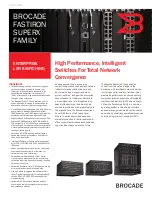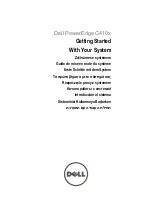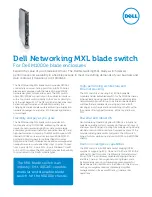
4-4
Stinger® MS+ Getting Started Guide
Stinger Operational Overview
Stinger management features
Onboard flash memory and software updates
You can perform software upgrades of the onboard flash memory in the field. You
upgrade the Stinger unit by accessing it locally through its serial (DIAG) port and
downloading software upgrades from a TFTP server. For details, see the
Stinger
Administration Guide
.
SNMP support
In addition to managing a Stinger unit by means of the command-line interface, you
can manage the unit by using an SNMP management station such as the
NavisAccess™ product. A Stinger unit can generate SNMP traps (notifications) to
indicate alarm conditions, and it relies on SNMP community strings to implement
SNMP security.
For information about using SNMP with Stinger units, see the
Stinger Administration
Guide
and the
Stinger SNMP Management of the ATM Stack Supplement
.
RADIUS support
You can use RADIUS to store user profiles for ATM circuits and terminating
connections. The RADIUS server must be compliant with vendor-specific attributes
(VSAs), as defined in RFC 2138. To use RADIUS, you must also configure the Stinger
unit to communicate with the RADIUS server.
For information about configuring and using RADIUS, see the
TAOS RADIUS Guide
and Reference
.
Tracking system activity
A Stinger unit supports many commands for monitoring system activity. To display
the commands that are available with the permission settings in the current User
profile, enter the
help
(or
?
) command. The following example shows the
commands available for the
admin
login. The left column shows command names,
and the right column shows the command
class
, which determines the permissions
required to use the command.
admin> ?
? ( user )
arptable ( system )
auth ( user )
callroute ( diagnostic )
clear ( user )
clock-source ( diagnostic )
clr-history ( system )
connection ( system )
date ( update )
debug ( diagnostic )
delete ( update )
device ( diagnostic )
dir ( system )
dircode ( system )
ether-display ( diagnostic )
fatal-history ( system )
format ( code )
fsck ( code )











































